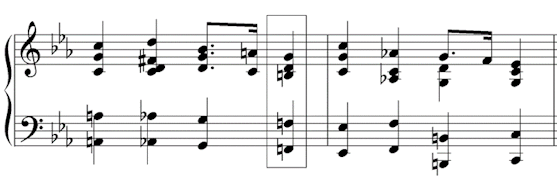Prevailing Key
The key at the start of a piece of music is the “home” key. Music can change key for brief moments, or for longer passages. When there’s a key change which doesn’t settle, we say the music is “passing through” that key – it is on its way somewhere else. When a key change settles for a number of bars – enough to make the new tonic feel established – we say the music has “modulated”. The “prevailing” key is whatever key the music is in at any particular moment in time.
You need to know the prevailing key before you can describe a chord with Roman numerals.
In the following piano piece by Schumann “Erinnerung”, the key changes all the time throughout this first section, but the overall main modulation is from the home key of A major to the dominant key of E major. There are lots of prevailing keys en route from A to E, and all of them happen through the use of the chords V7 and I, in each new key.

The home key is set by the key signature, and the use of the tonic chord in bar 1. Each key change that follows is then achieved by using a V7-I (or V-I) progression.
Each V7 (dominant 7th) chord is unique to a pair of parallel keys, for example G7 is the dominant 7th in C major and C minor. Once you have found a dominant 7th chord, it is then easy to find the tonic of the prevailing key, by counting backwards five notes (G-F-E-D-C). Remember that a dominant 7th chord is a major triad, with a minor 7th added on top.
Sometimes a V-I progression is used at a key change (rather than V7-I). Although a dominant triad can belong to several keys, the third of the dominant triad will usually be the new leading note in a key change. Use this note to work out the new tonic (which will be a semitone higher).
Identifying the Prevailing Key
To work out prevailing key, try to find a V, V7-I or vii°-I progression. Chord vii° is a “substitute dominant” because it works in basically the same way as the dominant.
In music with multiple parts, the easiest place to look for progressions is in the bass line and accompaniment parts.
Think of your chords as belonging to three types:
- tonic chords – these tell you the name of the key,
- dominant 7th chords – these allow you to identify which is the tonic chord,
- and pre-dominant chords – these are all the other chords, including the chromatic chords.
- Pre-dominant chords normally lead to the dominant – but there might be other chords between the two. Sometimes a predominant goes to Ic and then the dominant.
- The dominant leads to the tonic, usually straight away.
- The tonic is the same as the key.
Write down chord notes and stack them in 3rds (if possible). Try to name the chord and its inversion. Then, check the chord progression to work out the prevailing key.
Let’s work through an example. What is the Roman numeral of the boxed chord?

- The chord notes are: F-B-D and G
- Stacked in thirds, they are: G-B-D-F
- This is a major triad and a minor 7th, so it’s a dominant 7th.
- The lowest sounding note is F, the 7th of the chord, so it’s in third inversion – V7d.
- After a dominant 7th we expect a tonic chord, and this one is followed by C minor, so C minor is the prevailing key here. The chord is V7d in C minor.
